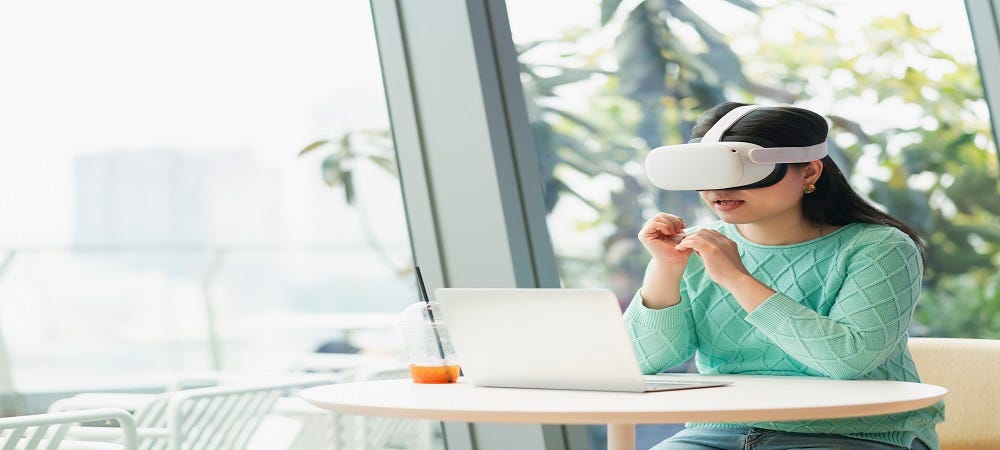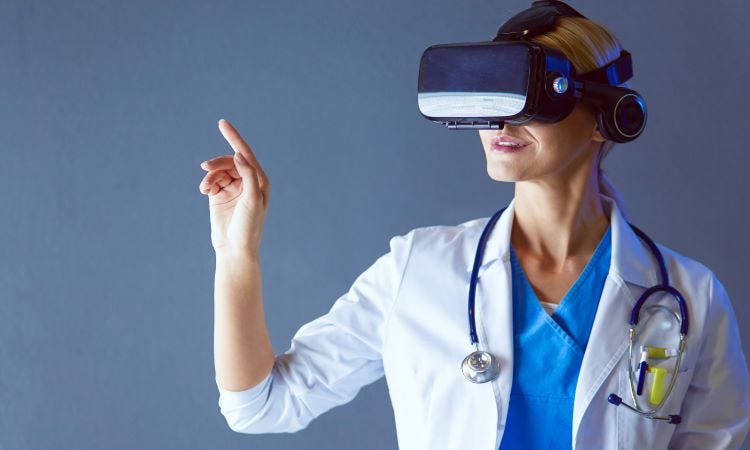Everybody learns in a unique way. Some people learn best by experience, while others prefer to put their information in paper. Nonetheless, the diversity of learning styles equals the population of the planet. Here’s where conventional teaching methods fall short. They are typically restricted to the real world and do not address all learning styles.
Some features of extended reality, or XR, are very compatible with various learning processes, goals, and learning styles. They increase the bounds of reality and present fresh chances to establish a fair and appropriate setting for improved education.
What is XR, or extended reality?
Computer-generated settings are grouped together under the umbrella term of extended reality, or simply XR. You can either fully immerse yourself in a virtual environment or a hybrid of the real and digital worlds. Fundamentally, XR alters how we interact with the Computer screen.
Virtual reality (VR), augmented reality (AR), and mixed reality (MR) are the technologies that XR combines.
The Greatest Conflict: AR, VR, or MR?
In XR, there are three primary technologies that operate on distinct principles. Let’s examine which virtual elements are improved by each XR technology and how they function.
Augmented reality (AR): Chances are good that you know someone who likes to use Instagram or Snapchat filters. Such filters are excellent illustrations of augmented reality. Technically speaking, augmented reality (AR) is the projection of additional digital layers onto reality. It overlays computer-generated virtual features on top of the real world.
Virtual reality(VR):What is the most futuristic device that comes to mind while thinking about The virtual reality headgear has become a symbol of technological advancements. It makes sense, considering that virtual reality may totally replace a user’s field of vision and submerge them in an artificially created world.
Mixed Reality (MR) : Mixed reality blends the virtual and actual worlds, falling between augmented reality and virtual reality. You can engage with virtual characters and objects that exist in the actual world, or the other way around. Wearable augmented reality devices or smartphones can be used to experience mixed reality. In fact, apps similar to Pokémon Go may have already introduced you to mixed reality.
How Does Learning Get Helped by Extended Reality?
One can’t help but wonder how this advanced technology will improve the effectiveness of education.
Online education has nearly completely replaced traditional schooling. Furthermore, as the advancements in the digital sphere coincide with the rise of online education, it presents a chance to surpass itself. Better learning circumstances and an inclusive learning environment that accepts students of all learning styles and speeds can be unlocked with XR.
Motivation and Interest
Every advancement in technology excite us. When the first touchpads and cellphones were introduced, everyone was equally enthusiastic and curious to find out more. The same holds true here since XR offers an atmosphere that goes beyond the actual world. There are countless opportunities to learn.
Individualization
XR platforms offer customised learning experiences by adapting to your surroundings. Envision turning your wall into a board so you can see every sticky note you have on it. In this case, virtual stuff can communicate with your surroundings. Technically speaking, AR systems use this spatial mapping technology to customise a particular location.
Engaged Education
By giving students the chance to interact with realistic-looking surroundings and objects, XR can help them fully grasp the concepts being taught and take an active role in their education. Furthermore, XR is helpful for developing technical skills and skill sets. situations that are expensive and risky, such as crime scene investigation or surgery.
Learning Through Games
The most common use of extended reality is in gaming. The adoption of XR technologies by the gaming industry predates the metaverse’s recent surge in popularity. Learning activities become enjoyable and captivating when they incorporate gamified features.
To sum up
In general, extended reality can help us make our present teaching strategies more effective by giving students access to resources they may not have known they needed and, in the end, by fostering an atmosphere where learning is both engaging and dynamic.
We help many organizations in their digital transformation journey with the implementation of augmented reality development services .Sapizon is the leading ar vr company in deploying the practical reality technologies spread around various industries. Our development team comprises of Engineers and Technologists in facing the complex problems and challenges in developing the right technology.




